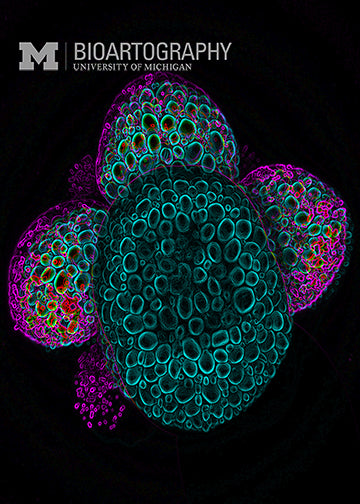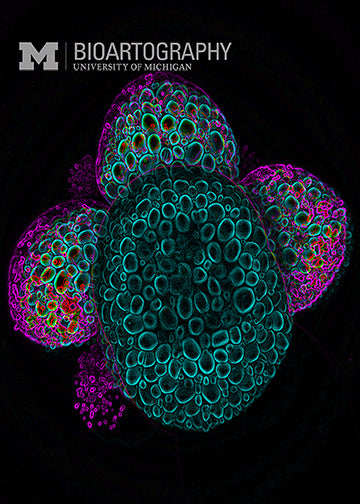

Marcus Kilwein, Ph.D. (Welte Laboratory, University of Rochester), Department of Molecular Biology, Princeton University
Understanding how early embryos grow and manage nutrients is a critical goal since proper metabolic balance is critical to life. Examining these questions in mammalian embryos is difficult due to their internal development. Moreover, in humans, such experimental explorations are not ethical. To circumvent these issues, we turned to externally developing snail embryos, which share many aspects of metabolism with mammals. The image shows an 8-cell stage mud snail embryo (Tritia obsoleta); organelles that store protein are labeled in cyan, while fat storage organelles are marked in magenta. Interestingly, you can see that different cells of the embryo receive custom nutrient supplies. The largest cell inherited almost exclusively protein, the medium sized cells contain a mix protein and fat, while the smallest cells possess primarily fat storage organelles. Since each of these cells will later form different tissues (skin, digestive tract, nervous tissue, etc.), it is possible that this custom nutrient store benefits later tissue-specific needs.
23-087
